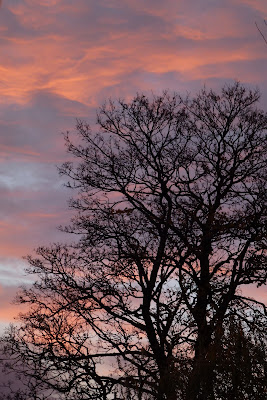Reading was the first challenge in this new state, but I soon found that by increasing the font size on my Kindle to ludicrous proportions, both eyes manage to return some kind of image to my brain. This system forces one to become very selective. At the first hint of tedium in a paragraph, the book is put ‘on hold’. My target of reading 80 books this year has been abandoned! Opting for thrillers, I hurtled through Robert Galbraith’s ‘Lethal White’ and have just started Michael Connelly’s ‘Dark Sacred Night’. Unfortunately, I had to set aside Faith Martin’s penultimate novel in her Hillary Greene series (Murder in Mind) which I’d been looking forward to, as she spent far too much time introducing old characters.
I miss rushing outside with my camera. I’ve taken a few odd photos of the garden, but actually the weather hasn’t been very conducive to such pursuits. The fun of uploading the results to the computer has dissipated: it’s now hard work. Luckily there’s no-one around to watch me gazing at the monitor through my old glasses, from which the left lens has been removed, but which are more of a headache than a help.
This is not meant to be a catalogue of complaints! Bear with me, dear reader, as I set out for you the reasons why my life is a little different from normal. On the positive side, I can still touch-type, and although I may seem a little crabby now and then, I count my blessings every time I glance across at the clock and find that if I close my bad eye – yes! I can see the time!
P.S. Please tell me if I’ve made any mistakes…




